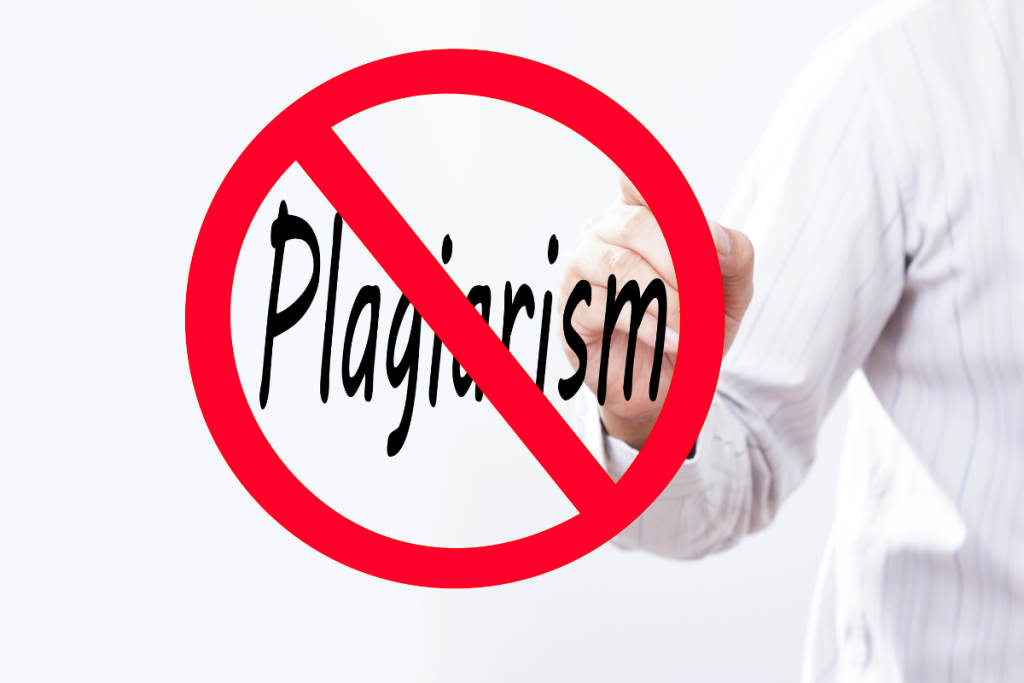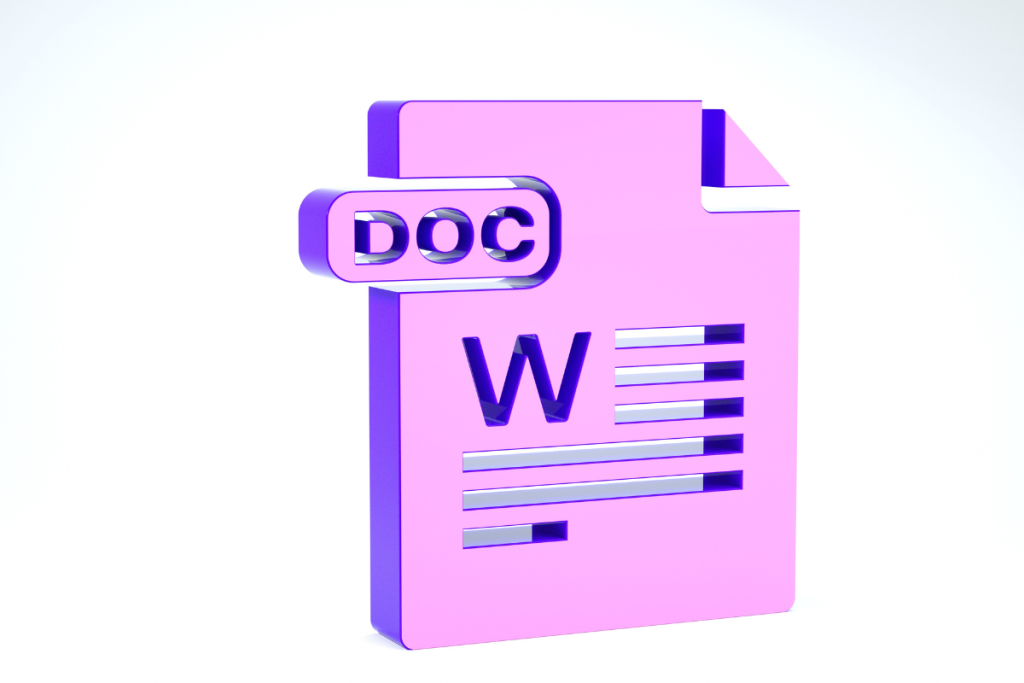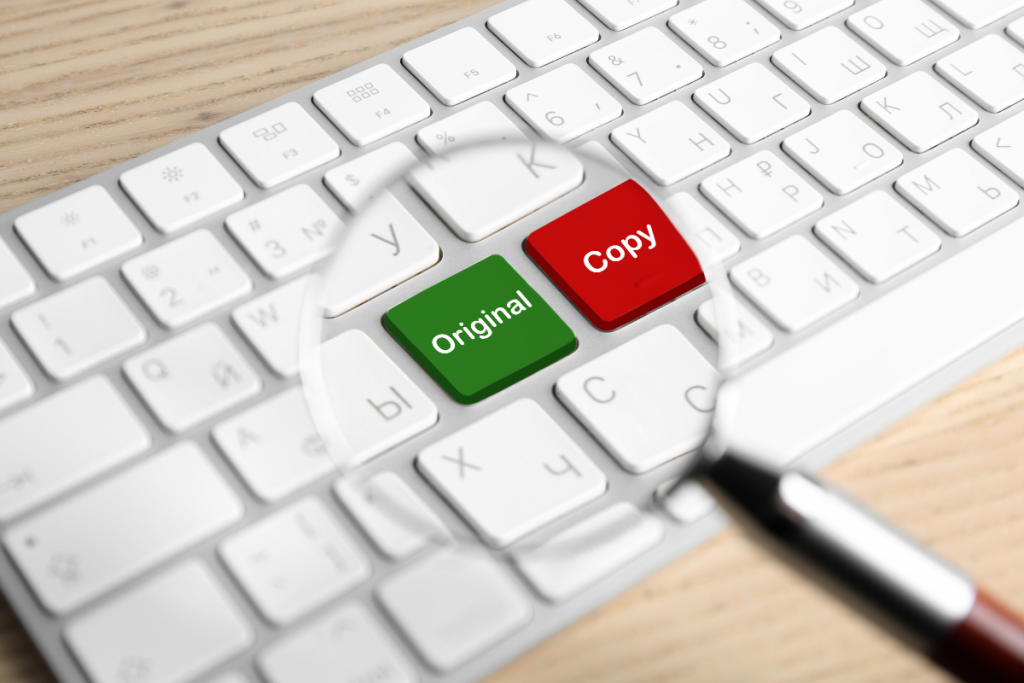If you’re a student or a professional writer, you may want to know how to check for plagiarism in Google Docs because it is important to ensure that your work is original.
Plagiarism is a serious offense that can have severe consequences, including loss of credibility, legal action, and even expulsion from school or termination from a job.
Fortunately, if you’re using Google Docs to write your documents, there are several tools and features available that can help you check for plagiarism and ensure that your work is original.
One of the most useful tools available in Google Docs is the Originality Report.
This feature uses the power of Google Search to help you properly integrate external inspiration into your writing while making it easy for you to check for potential plagiarism.
You can access the Originality Report by clicking on “Tools” in the menu bar and selecting “Originality Report” from the dropdown menu.
The report will highlight any potential matches with other sources and provide suggestions for how to improve your work.
Another way to check for plagiarism in Google Docs is to use third-party add-ons.
There are several add-ons available that can help you check your work for plagiarism, including Plagium, Plagiarismcheck.org, Turnitin, and Unicheck.
To use these add-ons, simply install them from the Google Workspace Marketplace, select the text you want to check for plagiarism, and click on the add-on in the menu bar.
The add-on will scan your work and provide you with a report on any potential matches with other sources.

How To Check For Plagiarism In Google Docs
When it comes to checking for plagiarism in Google Docs, there are two main ways to go about it: using built-in tools or third-party extensions.
Here’s a breakdown of each method:
Using Built-In Tools
Google Docs comes with a few built-in tools that can help you check for plagiarism.
One of the most useful is the “Explore” feature, which allows you to search the web for related content.
Here’s how to use it:
- Open your Google Docs document
- Click on “Tools” in the top menu
- Select “Explore”
- Type in a keyword or phrase related to your document
- Browse through the search results and look for any content that matches your own
- If you find something that looks suspicious, check it against your own work to see if it’s plagiarized
Another built-in tool that can help you check for plagiarism is the “Find and replace” feature.
This allows you to search your document for specific words or phrases that may have been copied from another source.
Here’s how to use it:
- Open your Google Docs document
- Click on “Edit” in the top menu
- Select “Find and replace”
- Type in a keyword or phrase that you suspect may have been copied
- Click “Find” to search your document
- If you find any instances of the keyword or phrase, check them against the original source to see if they’re plagiarized
Third-Party Extensions
If you want to get more advanced with your plagiarism checking, you can use third-party extensions.
There are several available in the Google Workspace Marketplace, including Grammarly, Unicheck, and Plagiarism Checker X.
Here’s how to use one of these extensions:
- Open your Google Docs document
- Click on “Add-ons” in the top menu
- Select “Get add-ons”
- Search for a plagiarism checker extension (e.g. Grammarly)
- Click “Install” to add the extension to your Google Docs
- Follow the instructions provided by the extension to check your document for plagiarism
Using a third-party extension can be a more thorough way to check for plagiarism, as it can catch similarities that may be missed by the built-in tools.
However, keep in mind that these extensions may come with a cost and may not always be 100% accurate.
Google Docs Basics
Google Docs is a free web-based word processing program that is part of the Google Suite of tools.

It allows users to create and edit documents online while collaborating with others in real-time.
Here are some basics to help you get started with Google Docs.
Navigating The Interface
The Google Docs interface is clean, user-friendly, and easy to navigate.
The main toolbar is located at the top of the screen and includes all the essential tools you need to create and edit documents.
You can access the toolbar by clicking on any of the tabs, such as File, Edit, View, Insert, Format, Tools, and Help.
To create a new document, simply click on the “New” button in the top left corner of the screen.
You can also access your existing documents by clicking on the “My Drive” button, which is located in the top left corner of the screen.
Your documents are organized by folders, and you can create new folders to keep your documents organized.
Creating and Saving a Document
To create a new document, click on the “New” button and select “Google Docs” from the dropdown menu.
You can then start typing your document in the blank space provided.
Google Docs automatically saves your work as you type, so you don’t have to worry about losing your work if your computer crashes or your internet connection goes down.
To save your document, click on the “File” tab and select “Save” or “Save As” from the dropdown menu.
You can also choose to download your document as a PDF, Word document, or other file format by clicking on the “File” tab and selecting “Download” from the dropdown menu.
Overall, Google Docs is a powerful and easy-to-use tool for creating and editing documents online.
With its real-time collaboration features and automatic saving, it’s an excellent choice for anyone looking to work on documents with others or from multiple devices.
Interpreting Plagiarism Check Results
After running a plagiarism check on your Google Doc, you will receive a report that details any instances of plagiarism detected in your document.
It is important to know how to interpret these results so that you can take appropriate action.
Here are some tips for interpreting plagiarism check results:
- Review the source of the plagiarized content: The plagiarism check report will typically include information about the source of the plagiarized content.
- This could be a website, book, or other document.
- Reviewing the source can help you determine if the plagiarism was intentional or accidental.
- Check the percentage of similarity: The plagiarism check report will also include a percentage of similarity between your document and the source of the plagiarized content.
- If the percentage is high, it could indicate that there is a significant amount of plagiarized content in your document.
- Review the specific sections flagged as plagiarized: The plagiarism check report will highlight specific sections of your document that are flagged as plagiarized.
- Reviewing these sections can help you determine if the plagiarism was intentional or accidental, and can help you identify the source of the plagiarized content.
- Consider the context of the plagiarized content: Sometimes, the plagiarism check report may flag content as plagiarized even if it is properly cited.
- In these cases, it is important to consider the context of the plagiarized content and determine if it is being used appropriately.
By following these tips, you can interpret plagiarism check results and take appropriate action to address any instances of plagiarism in your Google Doc.
Remember to always properly cite your sources and use plagiarism check tools to ensure that your work is original and properly attributed.

Preventing Plagiarism
Plagiarism is a serious offense that can lead to severe consequences, including academic penalties and legal action.
Therefore, it’s essential to take steps to prevent plagiarism in your work.
Here are some tips to help you avoid plagiarism.
Citing Sources Properly
One of the most effective ways to prevent plagiarism is to cite your sources properly.
When you use someone else’s work, whether it’s a direct quote or a paraphrase, you must give credit to the original author.
Failure to do so is considered plagiarism.
To cite your sources properly, you can use a citation style guide such as MLA, APA, or Chicago.
These guides provide specific guidelines for citing different types of sources, including books, articles, and websites.
Be sure to follow the guidelines carefully to ensure that your citations are accurate and complete.
Paraphrasing Techniques
Another way to avoid plagiarism is to use paraphrasing techniques.
Paraphrasing involves restating someone else’s ideas in your own words.
However, it’s important to remember that paraphrasing is not simply changing a few words around.
Instead, you must rephrase the original idea in a way that reflects your understanding of the material.
To paraphrase effectively, read the original text carefully, and then put it aside.
Try to explain the idea in your own words without looking at the original text.
Once you have done this, compare your version to the original to ensure that you have captured the essence of the idea.
If you are unsure, ask a friend or teacher to review your work.
By following these tips, you can avoid plagiarism and ensure that your work is original and of high quality.
Remember, plagiarism is a serious offense, and it’s always better to be safe than sorry.
Key Takeaways
If you are looking to check your Google Docs for plagiarism, there are a few key takeaways to keep in mind.
- First, you can use the built-in plagiarism checker known as “Originality Reports.”
- This tool compares your text against billions of web pages and books to identify potential instances of plagiarism.
- Second, you can use third-party add-ons to check for plagiarism in Google Docs.
- Some popular options include Plagiarismcheck.org, Plagium, Turnitin, and Unicheck.
- Third, you can use the Grammarly browser extension and a premium Grammarly account to scan for plagiarism issues.
Overall, there are multiple options available to help you check for plagiarism in Google Docs.
By utilizing these tools, you can ensure that your work is original and free from any potential plagiarism concerns.

